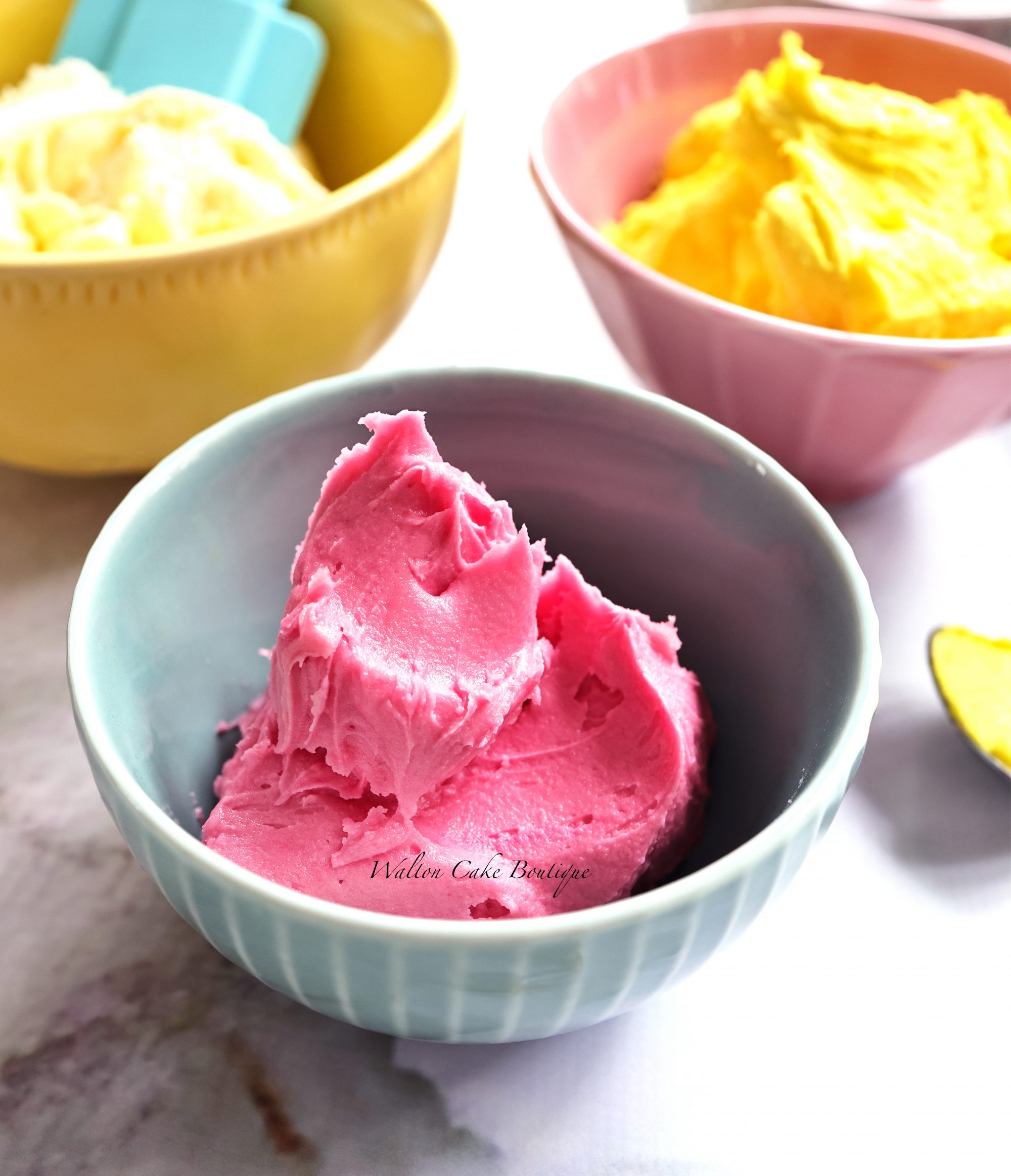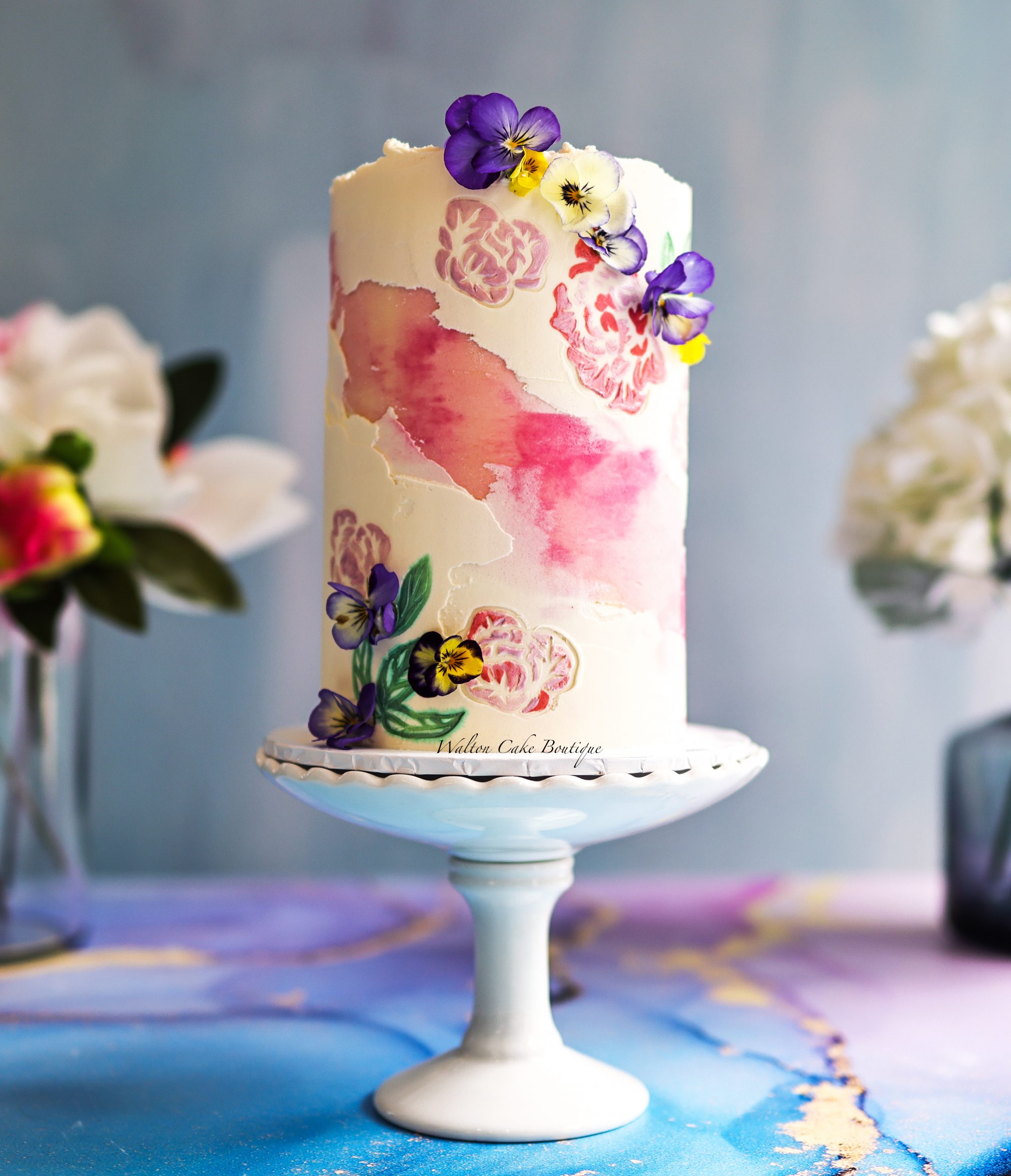by Katherine Walton on May 22, 2022


A Crusting Buttercream that is thick in consistency has many uses in baking and cake decorating. It is suitable for use in warm to hot climates due to its stability and ability to maintain its shape when used for piping or frosting a cake. In cake decorating, a crusting buttercream can be essential when preparing a cake for stamping designs and also when painting on buttercream.
Continue to read on and watch my full Step by Step “How to make a Crusting Buttercream suitable for hot weather, stamping and painting on buttercream” video tutorial below and read along with the full written recipe below.
How are the ingredients measured in this recipe?
In this recipe and in all of my recipes I provide all ingredients in grams and in mL (millilitres) where applicable. I also provide the ingredient quantities in METRIC cup measurements. However, be aware that cup measurements and spoon measurements vary in different countries. Therefore, I highly recommended the use of kitchen scales where applicable to measure the ingredients to achieve exactly what the recipe intends.
What is icing sugar and can I substitute it in this recipe?
Icing sugar is also known as powdered sugar and confectioners’ sugar. Not to be confused or replaced with caster sugar also known as super fine granulated sugar. The icing sugar in this recipe cannot be substituted.
What does cold and firm butter mean?
The butter must be cold to the touch, preferably straight out of the fridge and firm. The butter will difficult to beat at first but it is important that the butter is still firm and not soft in this recipe. This will ensure you prepare a buttercream that is stable and firm from the start. If the butter looks like it is melting or too soft, you can put it back in the fridge until it feels cold to the touch and firms up again.
Why does this buttercream use salted butter and not unsalted butter? Can I substitute it?
In my Crusting Buttercream recipe I use salted butter to enhance the flavours in this buttercream and at the same time reduce the sweetness that comes from the powdered sugar (icing sugar). You may substitute the salted butter with unsalted butter and add a pinch of salt for added taste. Keep in mind that adding a pinch of salt may not completely dissolve and incorporate into the buttercream if not thoroughly mixed. Make sure the added salt is well mixed in or you may end with an unpleasant salty buttercream.
How to store this Buttercream and what is its shelf life?
Store the buttercream sealed in an airtight container. You may store in the fridge for up to 5 days and at room temperature for up to 3 days. If stored in the fridge bring to room temperature before using again. The buttercream will harden. You may re whip in a mixer or with a metal spoon.
Troubleshooting
The buttercream is too stiff and hard to work with. What can I do to fix it?
The consistency of this buttercream can change from medium to stiff depending on the room temperature the frosting is made in and left at after making. In cold weather this buttercream will become stiff in which case you may add extra milk to make it thinner and easier to work with. Add small amounts of milk at a time, about 1/2 a teaspoon per two cups of frosting. Adding too much liquid can separate the frosting, making it frothy and ruin it.
The buttercream is too soft to work with. What can I do to fix it?
In some cases you may find that the buttercream is too soft to work with. In most circumstances this will be due to the temperature of the room the buttercream is being used in. In hot or warm weather, this buttercream should be of a medium to firm consistency and stable enough to withstand warm temperatures. However, if you still find that the buttercream is too soft, you may place the frosting in the fridge for five to ten minutes for it to firm up.
Also, when piping you can place the whole piping bag in the fridge for five minutes at a time. This trick is useful and works well for those that get warm hands when piping.
Watch the full step by step video provided with this recipe for visual instructions. If you have any questions leave me a comment and I’ll be more than happy to guide you through.